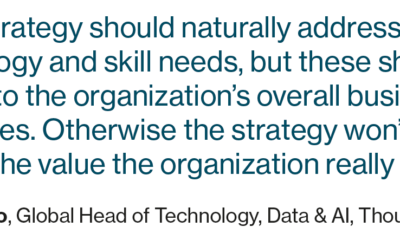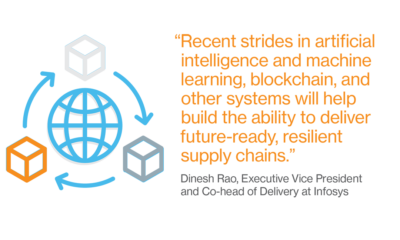Technology & Innovation
Is robotics about to have its own ChatGPT moment?

Stretch weighs about 50 pounds. It has a small mobile base, a stick with a camera dangling off it, and an adjustable arm featuring a gripper with suction cups at the ends. It can be controlled with a console controller. Henry controls Stretch using a laptop, with a tool that that tracks his head movements to move a cursor around. He is able to move his thumb and index finger enough to click a computer mouse. Last summer, Stretch was with the couple for more than a month, and Henry says it gave him a whole new level of autonomy. “It was practical, and I could see using it every day,” he says.
PETER ADAMS
Using his laptop, he could get the robot to brush his hair and have it hold fruit kebabs for him to snack on. It also opened up Henry’s relationship with his granddaughter Teddie. Before, they barely interacted. “She didn’t hug him at all goodbye. Nothing like that,” Jane says. But “Papa Wheelie” and Teddie used Stretch to play, engaging in relay races, bowling, and magnetic fishing.
Stretch doesn’t have much in the way of smarts: it comes with some preinstalled software, such as the web interface that Henry uses to control it, and other capabilities such as AI-enabled navigation. The main benefit of Stretch is that people can plug in their own AI models and use them to do experiments. But it offers a glimpse of what a world with useful home robots could look like. Robots that can do many of the things humans do in the home—tasks such as folding laundry, cooking meals, and cleaning—have been a dream of robotics research since the inception of the field in the 1950s. For a long time, it’s been just that: “Robotics is full of dreamers,” says Kemp.
But the field is at an inflection point, says Ken Goldberg, a robotics professor at the University of California, Berkeley. Previous efforts to build a useful home robot, he says, have emphatically failed to meet the expectations set by popular culture—think the robotic maid from The Jetsons. Now things are very different. Thanks to cheap hardware like Stretch, along with efforts to collect and share data and advances in generative AI, robots are getting more competent and helpful faster than ever before. “We’re at a point where we’re very close to getting capability that is really going to be useful,” Goldberg says.
Folding laundry, cooking shrimp, wiping surfaces, unloading shopping baskets—today’s AI-powered robots are learning to do tasks that for their predecessors would have been extremely difficult.
Missing pieces
There’s a well-known observation among roboticists: What is hard for humans is easy for machines, and what is easy for humans is hard for machines. Called Moravec’s paradox, it was first articulated in the 1980s by Hans Moravec, thena roboticist at the Robotics Institute of Carnegie Mellon University. A robot can play chess or hold an object still for hours on end with no problem. Tying a shoelace, catching a ball, or having a conversation is another matter.
There are three reasons for this, says Goldberg. First, robots lack precise control and coordination. Second, their understanding of the surrounding world is limited because they are reliant on cameras and sensors to perceive it. Third, they lack an innate sense of practical physics.
“Pick up a hammer, and it will probably fall out of your gripper, unless you grab it near the heavy part. But you don’t know that if you just look at it, unless you know how hammers work,” Goldberg says.
Technology & Innovation
Modernizing data with strategic purpose
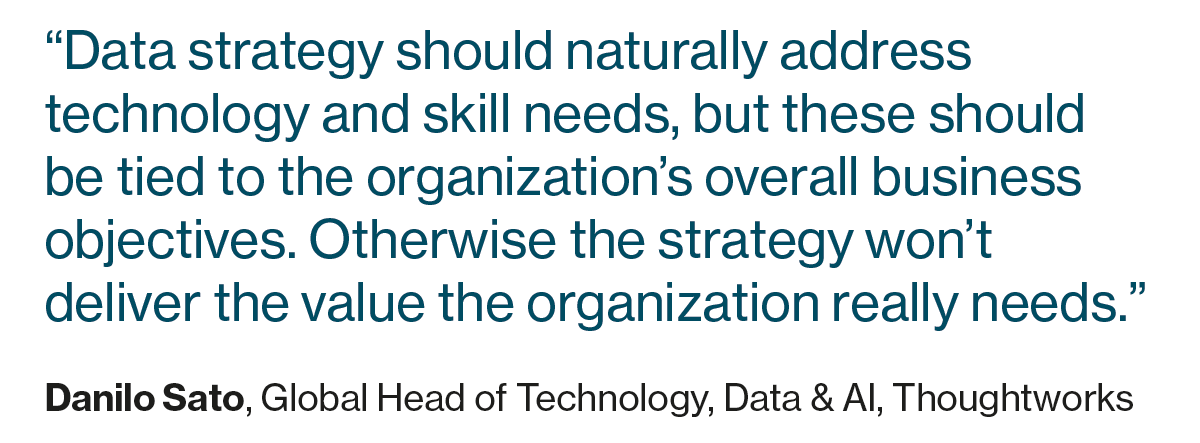
This report seeks to understand organizations’ objectives for their data modernization projects and how they are implementing such initiatives. To do so, it surveyed senior data and technology executives across industries. The research finds that many have made substantial progress and investment in data modernization. Alignment on data strategy and the goals of modernization appear to be far from complete in many organizations, however, leaving a disconnect between data and technology teams and the rest of the business. Data and technology executives and their teams can still do more to understand their colleagues’ data needs and actively seek their input on how to meet them.
Following are the study’s key findings:
AI isn’t the only reason companies are modernizing the data estate. Better decision-making is the primary aim of data modernization, with nearly half (46%) of executives citing this among their three top drivers. Support for AI models (40%) and for decarbonization (38%) are also major drivers of modernization, as are improving regulatory compliance (33%) and boosting operational efficiency (32%).
Data strategy is too often siloed from business strategy. Nearly all surveyed organizations recognize the importance of taking a strategic approach to data. Only 22% say they lack a fully developed data strategy. When asked if their data strategy is completely aligned with key business objectives, however, only 39% agree. Data teams can also do more to bring other business units and functions into strategy discussions: 42% of respondents say their data strategy was developed exclusively by the data or technology team.
Data strategy paves the road to modernization. It is probably no coincidence that most organizations (71%) that have embarked on data modernization in the past two years have had a data strategy in place for longer than that. Modernization goals require buy-in from the business, and implementation decisions need strategic guidance, lest they lead to added complexity or duplication.
Top data pain points are data quality and timeliness. Executives point to substandard data (cited by 41%) and untimely delivery (33%) as the facets of their data operations most in need of improvement. Incomplete or inaccurate data leads enterprise users to question data trustworthiness. This helps explain why the most common modernization measure taken by our respondents’ organizations in the past two years has been to review and upgrade data governance (cited by 45%).
Cross-functional teams and DataOps are key levers to improve data quality. Modern data engineering practices are taking root in many businesses. Nearly half of organizations (48%) are empowering cross-functional data teams to enforce data quality standards, and 47% are prioritizing implementing DataOps (cited by 47%). These sorts of practices, which echo the agile methodologies and product thinking that have become standard in software engineering, are only starting to make their way into the data realm.
Compliance and security considerations often hinder modernization. Compliance and security concerns are major impediments to modernization, each cited by 44% of the respondents. Regulatory compliance is mentioned particularly frequently by those working in energy, public sector, transport, and financial services organizations. High costs are another oft-cited hurdle (40%), especially among the survey’s smaller organizations.
This content was produced by Insights, the custom content arm of MIT technology Review. It was not written by MIT technology Review’s editorial staff.
Technology & Innovation
The Download: AI is making robots more helpful, and the problem with cleaning up pollution

November 2023
Technically speaking, neuroscientists have been able to read your mind for decades. It’s not easy, mind you. First, you must lie motionless within a hulking fMRI scanner, perhaps for hours, while you watch films or listen to audiobooks.
None of this, of course, can be done without your consent; for the foreseeable future, your thoughts will remain your own, if you so choose. But if you do elect to endure claustrophobic hours in the scanner, the software will learn to generate a bespoke reconstruction of what you were seeing or listening to, just by analyzing how blood moves through your brain.
More recently, researchers have deployed generative AI tools, like Stable Diffusion and GPT, to create far more realistic, if not entirely accurate, reconstructions of films and podcasts based on neural activity.
But as exciting as the idea of extracting a movie from someone’s brain activity may be, it is a highly limited form of “mind reading.” To really experience the world through your eyes, scientists would have to be able to infer not just what film you are watching but also what you think about it, and how it makes you feel. And these interior thoughts and feelings are far more difficult to access. Read the full story.
—Grace Huckins
We can still have nice things
A place for comfort, fun and distraction to brighten up your day. (Got any ideas? Drop me a line or tweet ’em at me.)
+ Intrepid archaeologists have uncovered beautiful new frescos in the ruins of Pompeii.
+ This doughy jellyfish sure looks tasty.
+ A short rumination on literary muses, from Zelda Fitzgerald to Neal Cassady.
+ Grammar rules are made to be broken.
Technology & Innovation
A brief weird history of brainwashing

Over the following years, in the wake of the Korean War, “brainwashing” grew into a catchall explanation for any kind of radical or nonconformist behavior in the United States. Social scientists and politicians alike latched onto the idea. The Dutch psychologist Joost Meerloo warned that television was a brainwashing machine, for example, and the anticommunist educator J. Merrill Root claimed that high schools brainwashed kids into being weak-willed and vulnerable to communist influence. Meanwhile, popular movies like 1962’s The Manchurian Candidate, starring Frank Sinatra, offered thrilling tales of Chinese communists whose advanced psychological techniques turned unsuspecting American POWs into assassins.
For the military and intelligence communities, mind control hovered between myth and science. Nowhere is this more obvious than in the peculiar case of an anonymously published 1955 pamphlet called Brain-Washing: A Synthesis of the Russian Textbook on Psychopolitics, which purported to be a translation of work by the Soviet secret-police chief Lavrentiy Beria. Full of wild claims about how the Soviets used psychology and drugs to control the masses, the pamphlet has a peculiar section devoted to the ways that Dianetics—a pseudoscience invented by the founder of Scientology, L. Ron Hubbard—could prevent brainwashing. As a result, it is widely believed that Hubbard himself wrote the pamphlet as black propaganda, or propaganda that masquerades as something produced by a foreign adversary.
ALAMY
Still, US officials apparently took it seriously. David Seed, a cultural studies scholar at the University of Liverpool, plumbed the National Security Council papers at the Dwight D. Eisenhower Library, where he discovered that the NSC’s Operations Coordinating Board had analyzed the pamphlet as part of an investigation into enemy capabilities. A member of the board wrote that it might be “fake” but contained so much accurate information that it was clearly written by “experts.” When it came to brainwashing, government operatives made almost no distinction between black propaganda and so-called expertise.
This gobbledygook may also have struck the NSC investigator as legitimate because Hubbard borrowed lingo from the same sources as many scientists of the era. Hubbard chose the name Dianetics, for instance, specifically to evoke the computer scientist Norbert Wiener’s idea of cybernetics, an influential theory about information control systems that heavily informed both psychology and the burgeoning field of artificial intelligence. Cybernetics suggested that the brain functioned like a machine, with inputs and outputs, feedback and control. And if machines could be optimized, then why not brains?
An excuse for government abuse
The fantasy of brainwashing was always one of optimization. Military experts knew that adversaries could be broken with torture, but it took months and was often a violent, messy process. A fast, scientifically informed interrogation method would save time and could potentially be deployed on a mass scale. In 1953, that dream led the CIA to invest millions of dollars in MK-Ultra, a project that injected cash into university and research programs devoted to memory wiping, mind control, and “truth serum” drugs. Worried that their rivals in the Soviet Union and China were controlling people’s minds to spread communism throughout the world, the intelligence community was willing to try almost anything to fight back. No operation was too weird.
One of MK-Ultra’s most notorious projects was “Operation Midnight Climax” in San Francisco, where sex workers lured random American men to a safe house and dosed them with LSD while CIA agents covertly observed their behavior. At McGill University in Montreal, the CIA funded the work of the psychologist Donald Cameron, who used a combination of drugs and electroconvulsive therapy on patients with mental illness, attempting to erase and “repattern” their minds. Though many of his victims did wind up suffering from amnesia for years, Cameron never successfully injected new thoughts or memories. Marcia Holmes, a science historian who researched brainwashing for the Hidden Persuaders project at Birkbeck, University of London, told me that the CIA used Cameron’s data to develop new kinds of torture, which the US adopted as “enhanced interrogation” techniques in the wake of 9/11. “You could put a scientific spin on it and claim that’s why it worked,” she said. “But it always boiled down to medieval tactics that people knew from experience worked.”
-

 Technology & Innovation2 years ago
Technology & Innovation2 years agoHow to get people to help you
-

 Technology & Innovation2 years ago
Technology & Innovation2 years agoWhy are scams getting worse?
-

 Sales & Marketing2 years ago
Sales & Marketing2 years agoVodafone invites Snapchatters to connect with Emma Raducanu virtually
-
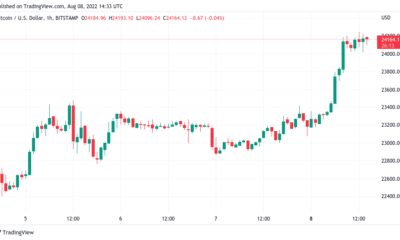
 Cryptocurrency2 years ago
Cryptocurrency2 years agoBitcoin price targets 8-week highs as Ethereum reaches $1.8K
-

 Cryptocurrency2 years ago
Cryptocurrency2 years agoAre there too many cryptocurrencies?
-

 Technology & Innovation2 years ago
Technology & Innovation2 years agoHow Log4Shell threatens the Internet
-

 Business & Finance2 years ago
Business & Finance2 years agoHere’s How Apple CEO Earned 500% More In 2021
-
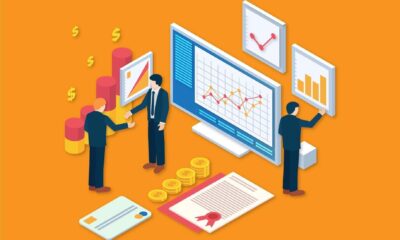
 Business & Finance2 years ago
Business & Finance2 years agoUN Announces Talks To Help Resolve Sudan’s Political Crisis

